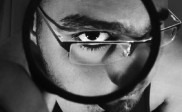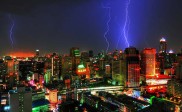6 Preparation Tips for Conference Photography
Although, conference photography isn’t really in its own niche per se, it can be a fun or interesting experience for any type of photographer. If you’re a freelance photographer, professional photographer or amateur that is helping by doing some charity work, as long as you’re prepared, shooting a conference will be easy.
Most conferences include speakers, presentations and lots of networking and mingling. In order to have a successful photography result, take in these preparation tips so you know how to plan and execute.

photo by boellstiftung
1. Know the job: Typically, if you’re a professional photographer, then you know all about having a contract for your client to sign. In some cases, the client may also have a contract they want you to sign to be sure they are going to get their photos in a timely manner. Whether you’re a professional or just trying to help, having clear communication between yourself and the client is critical. If contracts are essential to the client, keep in mind that regular pricing structures, copyrights, and fine print of the norm will be useless in this situation. For pricing, refer to time spent shooting, editing and how much the cost of DVD and delivery are. With copyrights, most likely your client is going to want to use the conference photos on the web, so restricting them in that manner won’t be a good idea. As for the fine print in your contract, you just need to explain to your client how you use the photos on your blog or portfolio in a simple manner. Their concern will probably be about which pictures you choose to use, so just set some time out to talk it over and come to a mature agreement. Furthermore, discussing who the key note speakers are and what the conference is about may help you in handling and preparing for the conference.

Photo by jake
2. Know the schedule: Looking at and memorizing the schedule will be extremely valuable to you. The schedule will include when the conference starts, ends, how many people are involved, the highlights of the event, and where it takes place. Knowing this information will have you prepared for how long you’ll be there, how many back-up batteries you need to bring, when your breaks are and where you’re going. Be sure to double check the schedule the night before in case any last minute changes were made. Once you’ve arrived, you should check their hand-outs and keep it in your pocket for further viewing.

Photo by YumekaDreamer
3. Use a Fast Lens: Conference rooms and venues are notorious for having bad lighting. However, having good quality shots for this occasion is really important. You need to use an SLR and, if you have access to either or both a 18mm f2.8 and a 85mm lens, you’ll be better off than if you were using a point-and-shoot. There are several pricy upgrades out there that will give you fantastic results, but the lenses mentioned above will get the job done. Additionally, although it probably won’t be required and can be somewhat distracting, you should bring a flash just in case.

Photo by AidaPavloEgonyan
4. Move around: Whenever you get to the conference venue, take in the elements of the room. Consider how big the room is, how large the stage is and how much room do you have to work with. You shouldn’t limit yourself by confining yourself to one area. To get photos with diverse perspectives, you have to move around. You should have access to the side of the stage, left center, front center, and center stage and so on. It would be a really good idea to bring a wide-angle lens if you have one, so you can get pictures of the audience, but be sure you’re focusing on an area with people and not empty seats.

Photo by boellstiftung
5. Check-in with the client: When the conference is about to wrap up (and you think you’re about to head home,) it is a really great idea to check in with your client first. It’s typical that after a conference people will want to speak to the keynotes and other people will want to network, so your client might be thinking, “this is a great photo opportunity!” Conferences usually involve a large group of like-minded individuals who maybe, get together once a year. Your photography skills are needed and you want to make your client happy. Not only are keynote speakers important to get photos of but so are the guests, volunteers, presenters and anyone that’s involved. To be effective at conference photography you need to be aware of your surroundings, know who is involved in all the elements, use different perspectives and do not miss a single speaker!

Photo by knuta
6. Quick turnaround: After your conference photography job is complete, now it’s on to the editing. Luckily, not a lot of editing will need to be done when working with conference shots. You still want things to look crisp and clean but turning photos into black and whites, sepia, or other tones is unnecessary. Conference photography isn’t based on artistic value nor do you need to compare to a wedding style shot. Editing for conference photography is basic which will enable you to have a quick turnaround. Your fast turnaround time for your client is crucial since they are going to need to use the photos as soon as possible. Also important is to sort out the pictures and compile a DVD. For an 8 hour conference no more than 300 are necessary. With that, you’d want to take around 75 of the best photos to present to them first. It is also suggested that you provide resolutions in high, medium and low values for whatever use your client might be planning for them.
Equally as important as the above tips, is to be prepared for guests to ask you where to see your pictures. You need your business card readily available to hand out and who knows, you might even get another gig out of it. In your conference photography experience, what have you found to be helpful to be successful?




Thanks for posting this, appreciate it!
Great read, many companies don’t always look for a good photographer but rather a cheap price. articles like this, I hope will educate them to know what to look for.